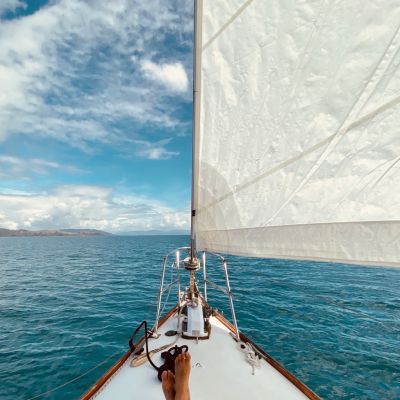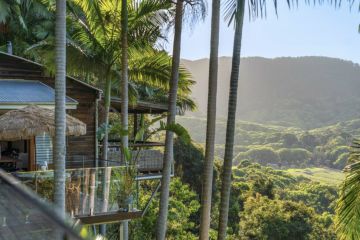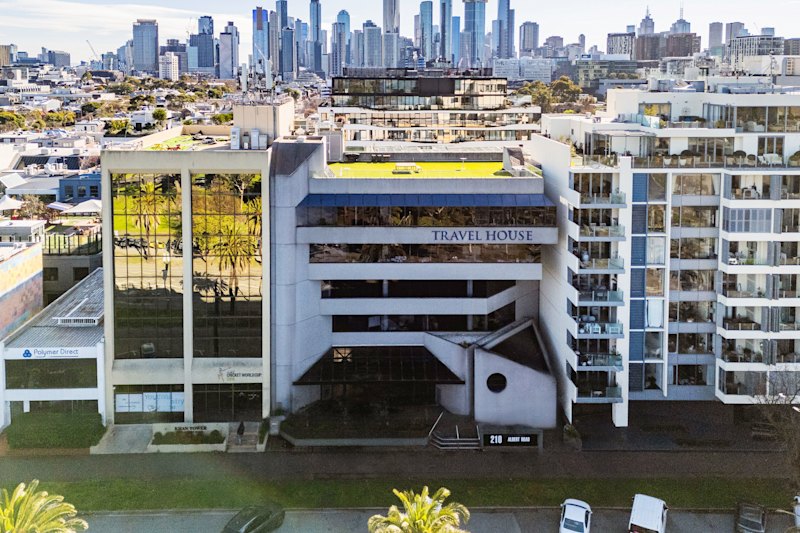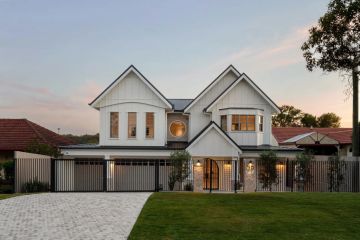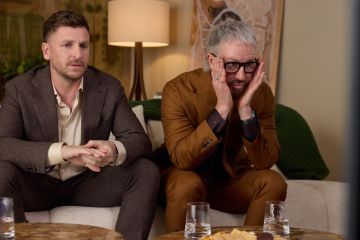How a couple transformed a dilapidated caravan into a family sanctuary
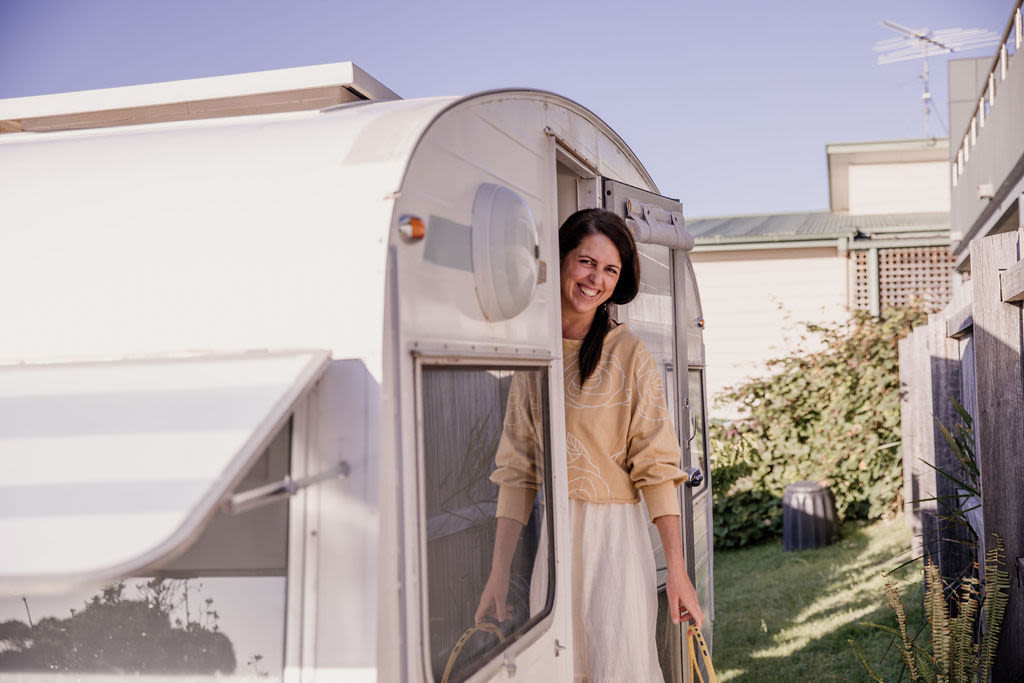
When Emma Power and Adam van Nooten’s family was set to expand earlier this year, friends expected that they would finally move out of their two-bedroom beach shack on the Great Ocean Road and into a larger place.
But given that the couple’s home of seven years is a 30-second walk to the beach and they both surf every day, they weren’t keen on leaving.
“We’re really, really lucky. It’s just a little rental two houses up from the beach,” says Power. “We’ve got full views and we’re constantly looking at the ocean. Every day we’re pinching ourselves because it’s just absolutely beautiful.”
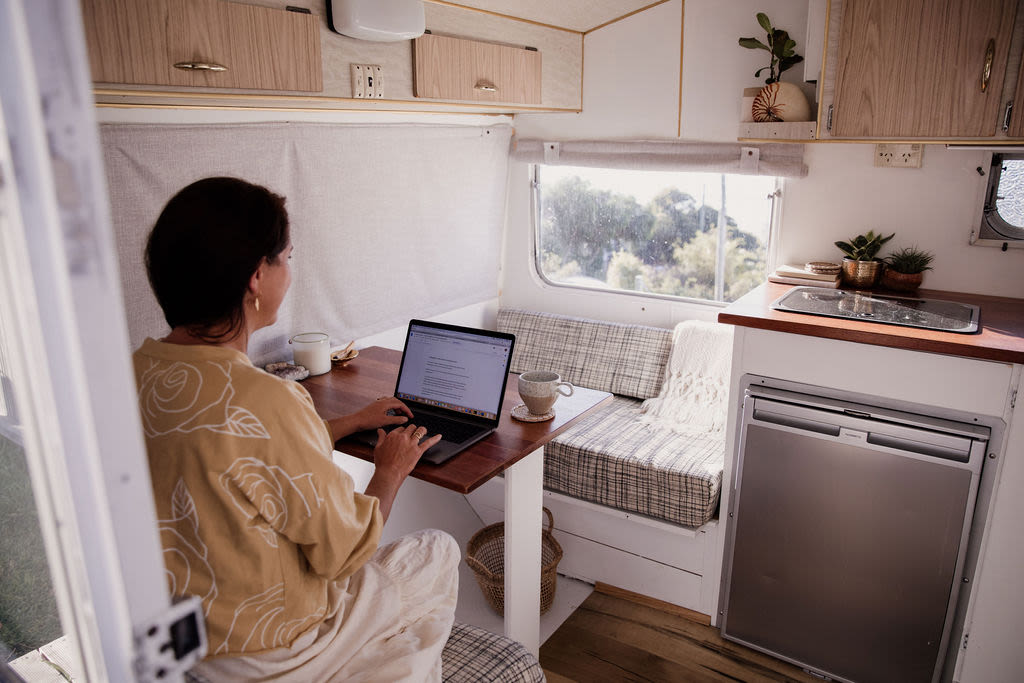
Instead, they found a creative solution.
Power, 39 and van Nooten, 36, bought a dilapidated old caravan.
As Power’s pregnant belly grew, van Nooten got to work transforming the caravan that would eventually become an extra room in their house – not to mention their dream space. The couple drew inspiration from design blogs and set out to fill the caravan with their favourite things.
The result is a stunning sanctuary complete with new appliances, wooden benchtops, a queen-sized bed, a table that converts into a single bed, retro-inspired furnishings and a laidback aesthetic that perfectly suits its coastal surrounds.
There is plenty of bamboo, brass, wood and rattan.

“I call it my ‘woman cave’ because I spend the most time in it, but everyone in the family uses it,” says Power.
Power says the caravan has been a godsend for her while writing books this year (she’s onto her second), and that they take it in turns meditating or taking naps in there if it’s been a rough night.
It can also be attached to the back of their car for family holidays, and doubles as a guest room when friends and family come to stay.
Perhaps most importantly, the introduction of the caravan has allowed the family to remain in their idyllic beachfront locale rather than moving into the larger house they own in Geelong, which they currently rent out.
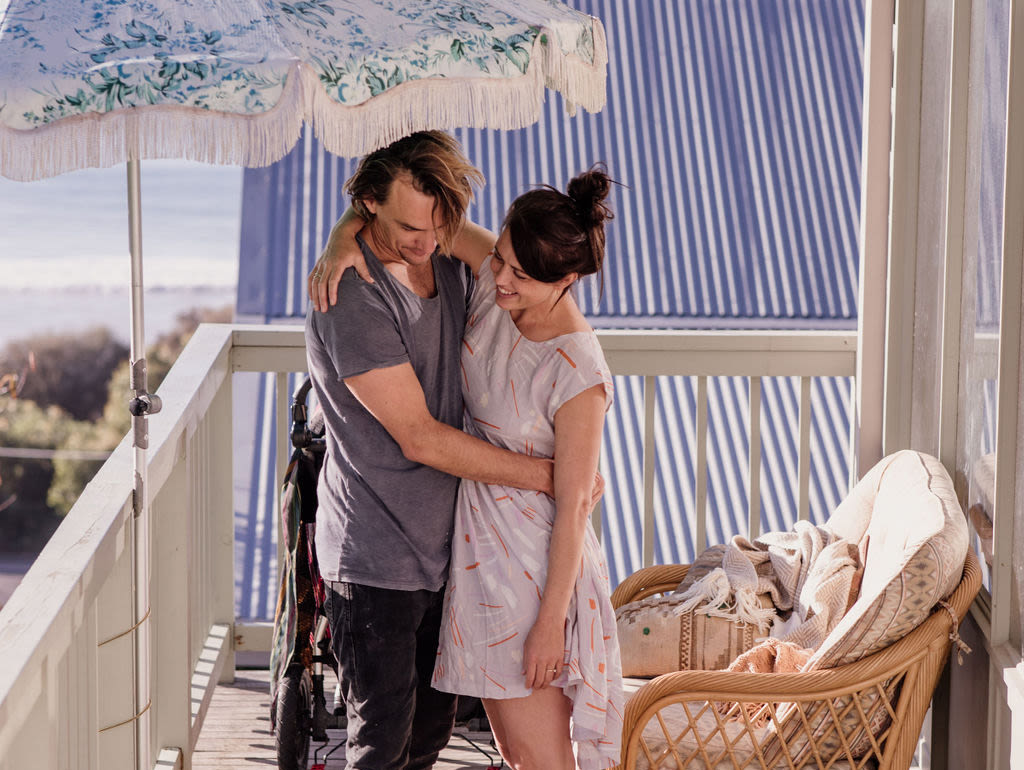
It’s a classic testament to the old adage, “Buy where you can afford and rent where you want to live.”
While the Lorne housing market is notoriously difficult to break into, the rent that the couple receive for their Geelong property covers what they pay for their shack in Lorne.
Power says she’d rather live in a tent on the beach than a larger house elsewhere, and that the size of their home forces them to live minimally.
“It’s really simple having a small home. And being across the road from the beach, we feel like we’ve got the greatest front yard you could imagine,” says Power. “It’s all nature.”
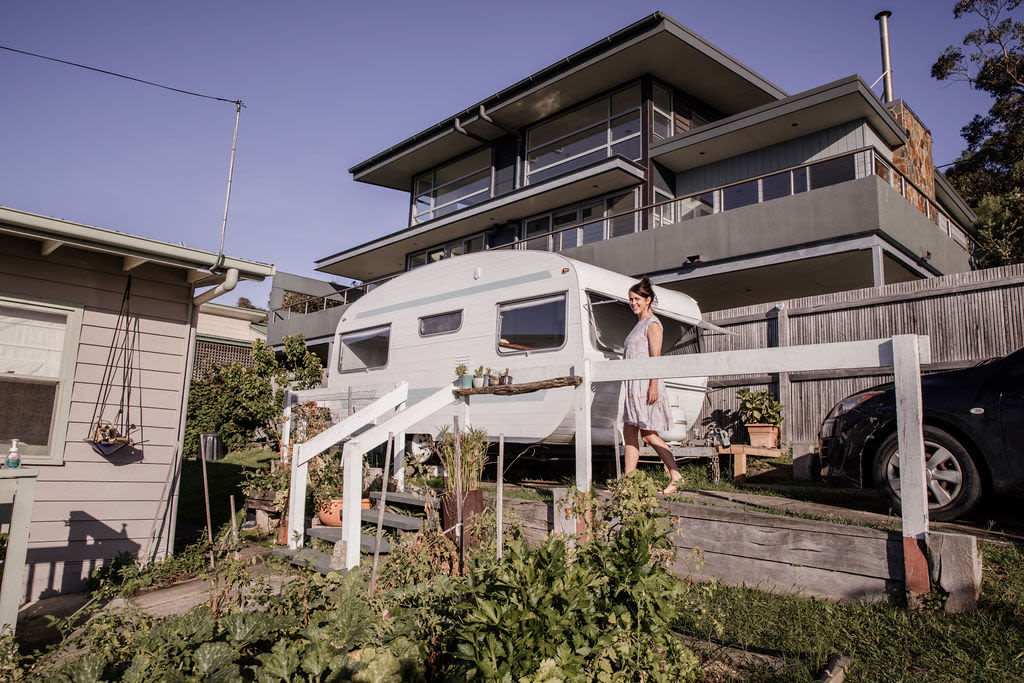
Power is a relationship expert who speaks, writes, teaches and runs workshops in Victoria, while van Nooten travels the world visiting tropical locations as a private surf guide to one family.
It means that van Nooten is sometimes away for months at a time, but when he’s home he can be fully present with the family.
Power says that this arrangement works for them, and that she “can’t even imagine” the two of them working nine to five in an office or sitting in traffic each day.
The couple’s living situation is really an extension of their shared life philosophy, which is characterised by a focus on joy and seeking alternate routes in life.
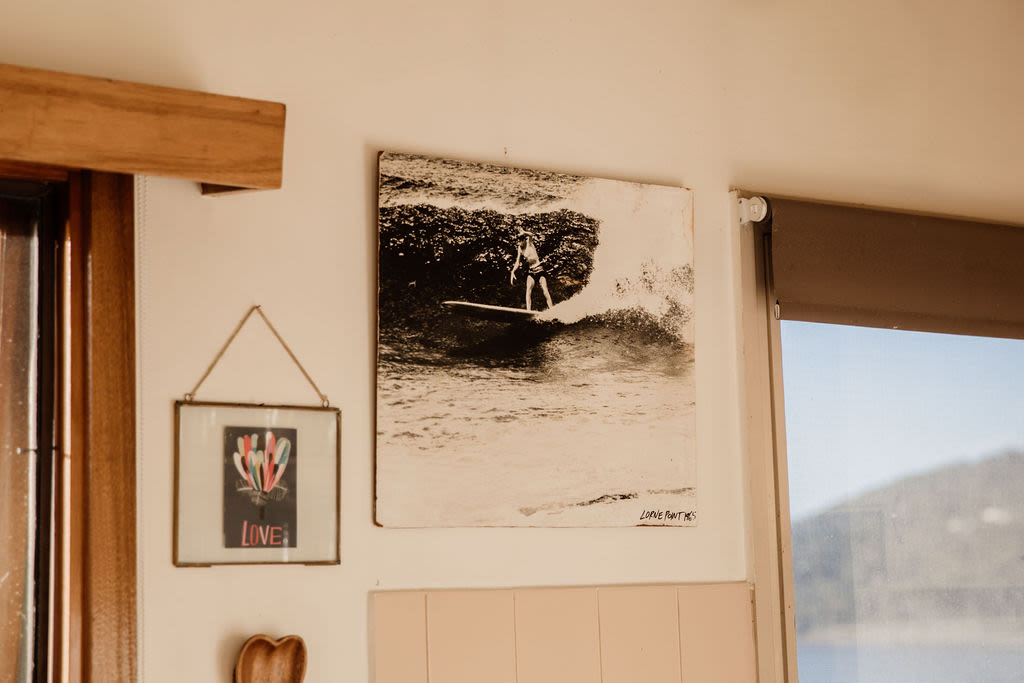
“There’s a balance between going with the flow and very consciously crafting our lifestyle,” Power says.
“If you’re not conscious about the decisions of how you want your life to look, you’ll inevitably follow the stereotypical path that other people have mapped out for you.
“We’re always checking in: Are we feeling the way we want to feel? Because that’s the most important thing, really. It’s not about what we have; it’s about how we feel … We’re always asking that question: Have we found our joy? And if the answer to that is no, we adjust ourselves accordingly.”
This article is part of a series about Australians who have created their dream homes and lifestyles, brought to you by Set For Life.
We recommend
We thought you might like
States
Capital Cities
Capital Cities - Rentals
Popular Areas
Allhomes
More
